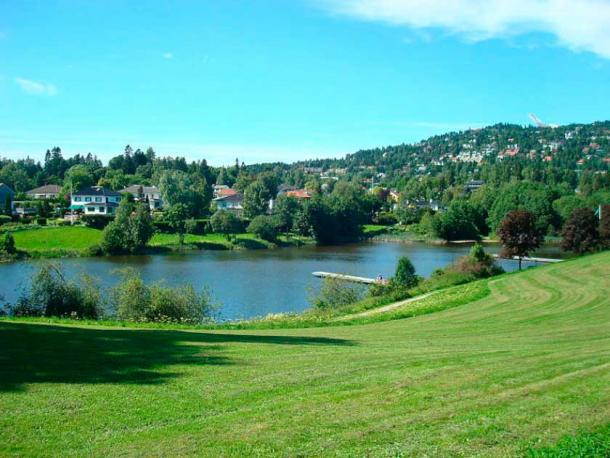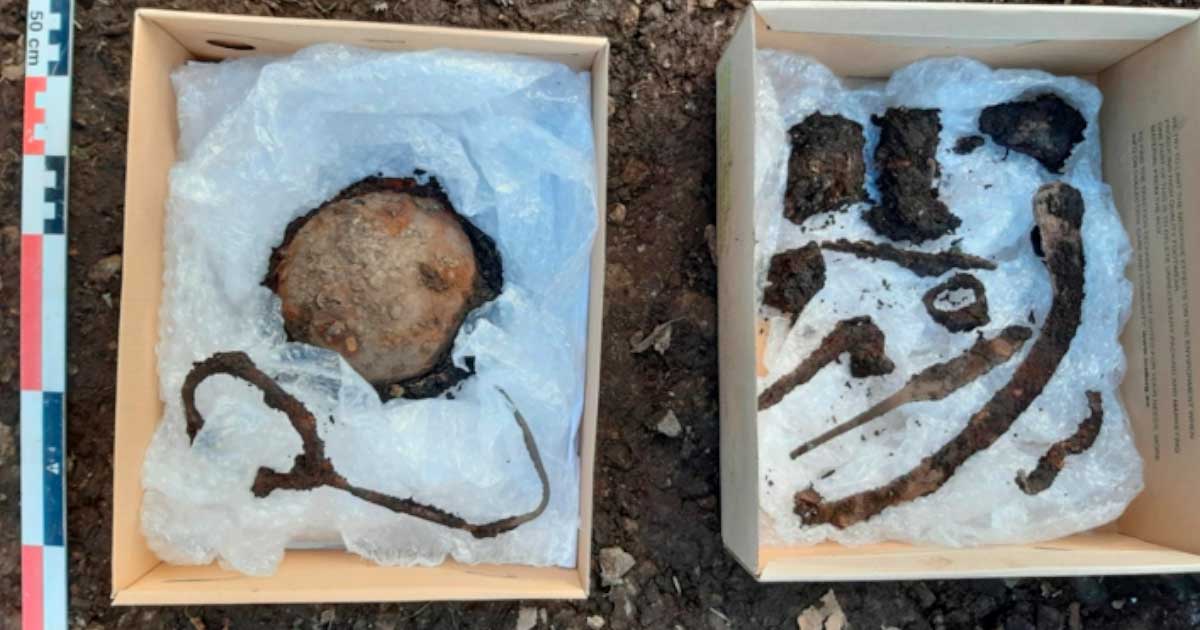Very Rare Viking Grave Excavated in Western Oslo
An exceptionally rare Viking Age grave has been unearthed in Oslo, Norway’s capital city.
The Viking Age (793–1066 AD) followed the Migration Period and the Germanic Iron Age in Europe. At this time Norsemen (from Norway), better known as Vikings, embarked on large-scale raiding and trading throughout Europe and North America.
The newly discovered Viking grave was found on the upper side of Lake Holmendammen, which is today the west end Vestre Aker district in Oslo. While it is known there was a large Viking Age settlement in Norway’s capital city Oslo, very few artifacts have ever been unearthed, making this find exceptionally “rare.”
Marianne Bugge Kræmer, an archaeologist at the Oslo Municipality Cultural Heritage Management Office, told Science Norway that during the Viking Age, the location of the grave on a prominent hill, “was clearly visible in the terrain and with a great view.”
- History of the Vikings: All You Need to Know
- Iron Age Europe: 2000 Years Of Change Rolls Across The Continent

Holmendammen Lake, Oslo, where the Viking grave has been found. (CC BY-SA 3.0)
A “Very Rare” Discovery For Oslo
Glørstad explained that until this discovery of an intact grave, only the smashed remains of grave goods, fragmented and burnt bones from 58 Viking Age burials had been unearthed in the city. Most of these remains were excavated accidentally by workmen and a majority were recovered in the late 1800s when Oslo’s St. Hanshaugen, Grünerløkka, Bjølsen, Tåsen and Sinsen all underwent significant renovations.
In the 1930s, a Viking sword was discovered a meter or so below the surface of the ground beneath Oslo’s city hall. This artifact was dated to the 8th century, a period of time known as Bakkegaten. Earlier this year a cape buckle was discovered during construction work in Oslo, and both of these finds, according to Glørstad, are “very rare” for Oslo. And so too are the treasures discovered in this newly discovered burial, “very rare.”
- Hunters Find Striking Viking Sword Isolated at High Altitude in Norway
- Vikings in Ireland: Recent Discoveries Shedding New Light on the Fearsome Warriors that Invaded Irish Shores
New Houses Revealing Ancient Burials
The grave was discovered during a test excavation prior to the building of a new house, which, because it was a private build, was financed by the Norwegian Directorate for Cultural Heritage. Glørstad said the grave was located directly under a thin layer of topsoil and turf right on the east side of the highest point on the site overlooking Holmendammen, where in the Viking period the Holmenbekken River flowed.
Within the grave the archaeologists discovered fragments of “a soapstone vessel, an elaborate Celtic brooch, a sickle, two knives, horse riding equipment and a shield boss.” The brooch features spherical designs which informed the researchers as to when the piece was crafted and worn. It was pinned down to approximately AD 850, and Kræmer said that while the discovery of this brooch helped date the find, its style also determined that it was a “man” who was buried here.

Left; the remains of the cape brooch with spheres. Right; assorted other Viking objects, including: a Celtic brooch, a sickle, two knives, horse tack such as a possible bridle and a bell. (Byantikvaren in Oslo)
Why Are There So Many More Male Viking Graves?
The answer to this question is a simple one, yet not obvious. Viking Age women's graves are generally found with the jewelry and buckles worn with Viking Age women's clothing. Men’s graves, on the other hand, almost always contain weapons like swords, axes, spears and shields. According to a report on Arkeology, of the 58 grave sites discovered in Oslo “54 are male graves and only 4 female graves.” So what might explain this weight of male graves compared to those of women?
Outside Oslo, at the Viking settlement at Kaupang in Vestfold, over the years researchers have noted an even greater ratio of male to female Viking Age graves. While there are many reasons to account for this apparent imbalance, archaeologists maintain that this doesn’t directly mean more men than women were buried in the Viking Age. The primary reason is because large iron axes, swords and iron spear tips are much easier to detect than the delicate bronze jewelry associated with women's graves.
Top image: Some of the objects that were dug out from the Viking grave in Oslo. The box on the left contains the remains of the cape brooch with spheres. Source: Byantikvaren in Oslo
By Ashley Cowie




















Comments
Being only one meter (three feet vice six) implies it was NOT an intentional burial. More likely, he died suddenly and was left there, possibly pre-Ice Age, then the glaciation added the dirt. But look at this, what is the metal? https://arkeonews.net/wp-content/uploads/2022/12/Viking-grave-min.jpeg That would give you an idea of the length of time it was under the Earth.
Nobody gets paid to tell the truth.